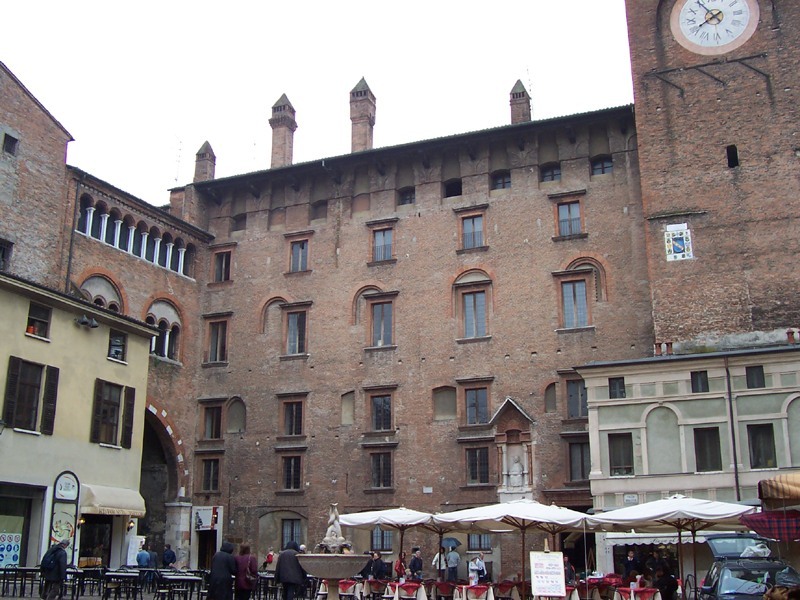Palazzo Del Podestà, Mantua on:
[Wikipedia]
[Google]
[Amazon]
The Palazzo del Podestà, or Palazzo del Broletto, is a 13th-century palace, located between Piazza delle Erbe and Piazza Broletto, in the center of
 The palace was built in 1227 as the home and offices of the commune government in Mantua. After a fire, the building was reconstructed in
The palace was built in 1227 as the home and offices of the commune government in Mantua. After a fire, the building was reconstructed in  The Palazzo del Podeatà facade, while still displaying the tipsy arrangement of windows is more sober in its decoration.
Presently, the palace is still under much needed reconstruction.
The Palazzo del Podeatà facade, while still displaying the tipsy arrangement of windows is more sober in its decoration.
Presently, the palace is still under much needed reconstruction.
Mantua
Mantua ( ; it, Mantova ; Lombard language, Lombard and la, Mantua) is a city and ''comune'' in Lombardy, Italy, and capital of the Province of Mantua, province of the same name.
In 2016, Mantua was designated as the Italian Capital of Culture ...
, region of Lombardy, Italy. The building for many years serving as the offices of the Municipality
A municipality is usually a single administrative division having corporate status and powers of self-government or jurisdiction as granted by national and regional laws to which it is subordinate.
The term ''municipality'' may also mean the go ...
. The main facade faces Piazza Broletto.
History
 The palace was built in 1227 as the home and offices of the commune government in Mantua. After a fire, the building was reconstructed in
The palace was built in 1227 as the home and offices of the commune government in Mantua. After a fire, the building was reconstructed in Renaissance
The Renaissance ( , ) , from , with the same meanings. is a period in European history marking the transition from the Middle Ages to modernity and covering the 15th and 16th centuries, characterized by an effort to revive and surpass ideas ...
-style by designs of Luca Fancelli Luca Fancelli (c. 1430 – c. 1502) was an Italian architect and sculptor.
Biography
Fancelli was born in Settignano, a fraction of Florence. Much of his life and work is an enigma; what is known for sure is that he trained as a stonecutter ...
, commissioned in the 15th century by Duke Ludovico Gonzaga
Duke is a male title either of a monarch ruling over a duchy, or of a member of royalty, or nobility. As rulers, dukes are ranked below emperors, kings, grand princes, grand dukes, and sovereign princes. As royalty or nobility, they are ran ...
. The main facade has a niche with a well-worn 13th-statue said to be of Virgil
Publius Vergilius Maro (; traditional dates 15 October 7021 September 19 BC), usually called Virgil or Vergil ( ) in English, was an ancient Roman poet of the Augustan period. He composed three of the most famous poems in Latin literature: t ...
at his desk, between two columns.
The palace has, as described, two facades. The main facade on Piazza Broletto has a tall clocktower with an awkwardly place coat of arms. The niches hold the statue of Virgil and the Virgin. The palace shows the evidence of reconstruction across the centuries with walled up arches of prior windows, interrupted by newer construction.
At the Corner, a large arch, with mullioned windows are the Arch of the Arengario, that links the building to the town archives or Masseria.
 The Palazzo del Podeatà facade, while still displaying the tipsy arrangement of windows is more sober in its decoration.
Presently, the palace is still under much needed reconstruction.
The Palazzo del Podeatà facade, while still displaying the tipsy arrangement of windows is more sober in its decoration.
Presently, the palace is still under much needed reconstruction.
References
{{DEFAULTSORT:Palazzo del Podesta, Mantua Palaces in Mantua Renaissance architecture in Mantua